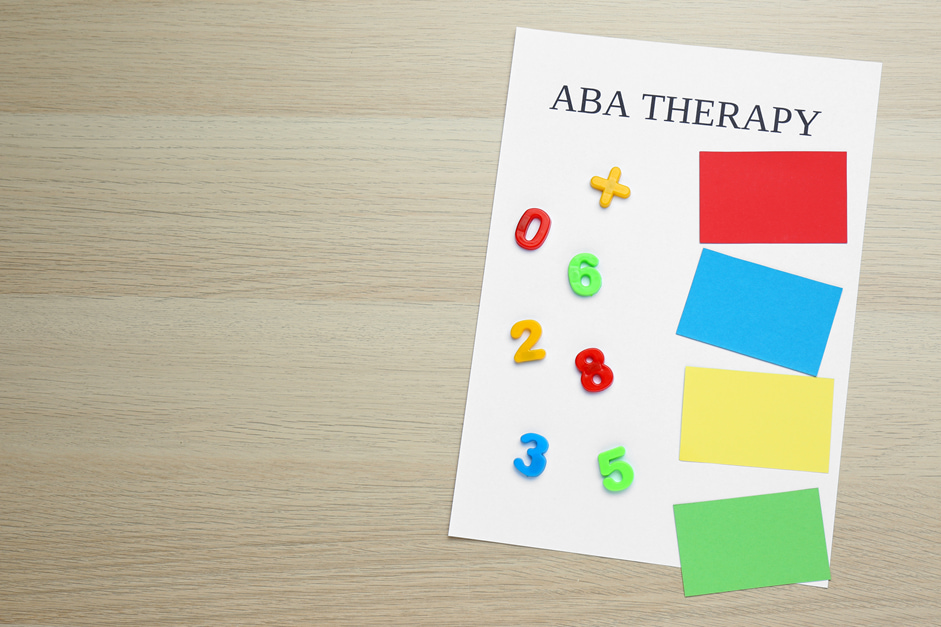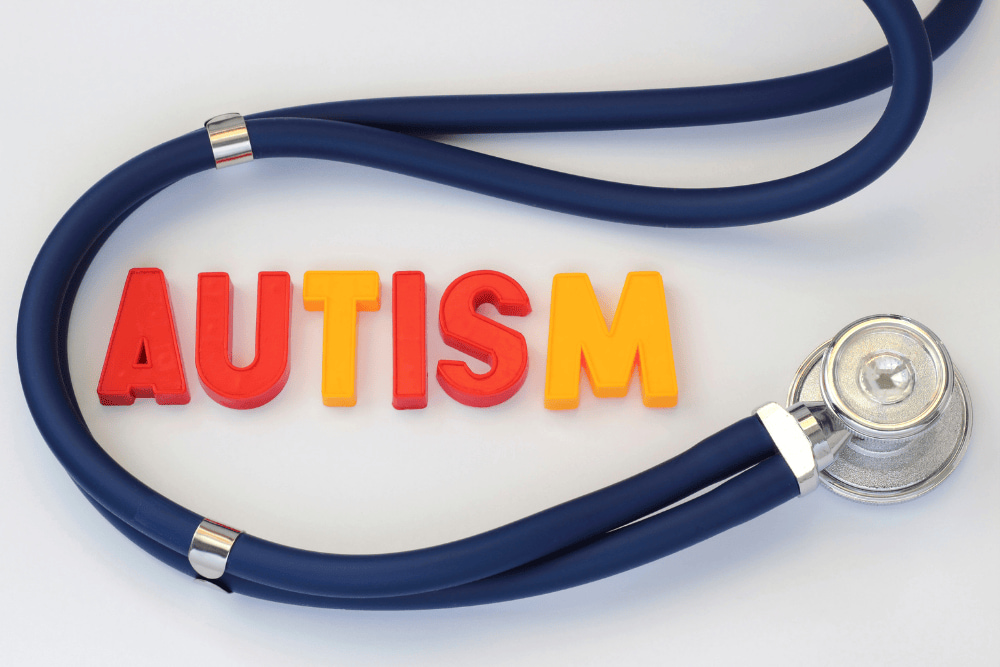Key Takeaways: Continuous vs. Discontinuous Measurement in ABA
- Measurement is foundational in ABA as it drives data-informed decisions and tracks behavior change over time.
- Continuous measurement captures every instance of behavior, offering precise, detailed data ideal for high-frequency or long-duration behaviors.
- Discontinuous measurement records samples of behavior at intervals, making it a more practical option when resources are limited or behaviors are brief or sporadic.
- Both methods can be used together to balance precision with practicality, especially for comprehensive behavior analysis.
- Consulting with ABA professionals ensures the correct approach is used to gather valid, reliable, and actionable behavior data.
Understanding Continuous and Discontinuous Measurement in Applied Behavior Analysis (ABA)
Measurement plays a crucial role in Applied Behavior Analysis (ABA) as it allows for the assessment and evaluation of behavior change. By measuring behavior, ABA practitioners can gather objective data to track progress, make informed decisions, and modify interventions accordingly.
At Above and Beyond Therapy, we use only the most effective, evidence-based ABA techniques to support meaningful progress. A key part of this is how we measure behavior. Understanding the difference between continuous and discontinuous measurement in ABA helps us choose the best approach for each client. Let’s take a closer look at how these methods play a role in delivering effective ABA therapy.
The Importance of Measurement in ABA
Measurement is fundamental in ABA as it provides a systematic and objective way to assess behavior. It allows practitioners to quantify behavior, track progress over time, and determine the effectiveness of interventions. Without measurement, it would be challenging to determine whether behavior change is occurring or if interventions need to be adjusted. Additionally, measurement provides a foundation for research and contributes to evidence-based practices in ABA.
Continuous vs Discontinuous Measurement in ABA : The Different Approaches to Measurement
In ABA, there are two primary approaches to measurement: continuous measurement and discontinuous measurement. These approaches differ in the way data is collected and the level of detail captured.
What Is Continuous Measurement in ABA?
In the field of Applied Behavior Analysis (ABA), continuous measurement is a method used to gather data on behavior that occurs at a high frequency or for an extended period of time. This approach aims to capture every instance of the behavior being observed, providing a comprehensive understanding of its occurrence and patterns.
Definition and Purpose of Continuous Measurement in ABA
Continuous measurement involves tracking and recording each occurrence of a behavior throughout the observation period. This method ensures that no instances of the behavior go unnoticed, allowing for a detailed analysis of its frequency, duration, and intensity.
The primary purpose of continuous measurement is to obtain accurate and reliable data that can be used to evaluate the effectiveness of interventions or treatment plans. By continuously monitoring the behavior, ABA practitioners can track progress, identify trends, and make informed decisions regarding behavior management strategies.
Examples of Continuous Measurement Techniques
Several techniques are commonly used in continuous measurement. These techniques are designed to capture different aspects of behavior and provide valuable data for analysis. Here are a few examples:
Event Recording in Continuous Measurement
This technique involves tallying each occurrence of the behavior of interest. A tally mark is made on a data sheet or electronic device every time the behavior occurs. Event recording is often used for behaviors with a discrete start and end, such as hand raising or vocalizations.
Continuous Measurement Duration Recording
Duration recording involves measuring the length of time that a behavior occurs. A timer or stopwatch is used to track the duration of each instance of the behavior. This technique is useful for behaviors that have a defined beginning and end, such as tantrums or on-task behavior.
Interval Recording During Continuous Measurement
Interval recording involves dividing the observation period into predetermined time intervals and recording whether the behavior occurs within each interval. This technique provides an estimate of the behavior's presence during specific periods. It is commonly used when continuous measurement is not feasible due to resource limitations or when the behavior occurs at a high frequency.
Time Sampling in Continuous Measurement
Time sampling involves randomly selecting specific moments during the observation period to record the behavior. This technique provides an estimate of the behavior's occurrence by sampling at different time points. Time sampling is useful when continuous measurement is not practical, such as when the behavior is sporadic or when resources are limited.
Each of these continuous measurement techniques has its strengths and limitations. ABA practitioners select the most appropriate technique based on the behavior being measured, available resources, and the desired level of detail needed for analysis.
By employing continuous measurement techniques, ABA practitioners can collect accurate and comprehensive data to inform decision-making and promote positive behavior change.
What Is Discontinuous Measurement in ABA?
Discontinuous measurement, also known as interval recording or partial interval recording, is a technique used in Applied Behavior Analysis (ABA) to measure the occurrence or non-occurrence of a behavior within specific time intervals. Unlike continuous measurement, which captures every instance of behavior, discontinuous measurement provides an estimate of the behavior's occurrence by sampling it at predetermined intervals.
Definition and Purpose of Discontinuous Measurement
Discontinuous measurement involves dividing the observation period into smaller intervals and noting whether the behavior of interest occurred at least once during each interval. The observer records a "yes" or "no" for each interval, indicating whether the behavior was observed or not.
The purpose of discontinuous measurement is to obtain a general understanding of the behavior's frequency and pattern over time. It can be particularly useful when continuous measurement is not feasible due to time constraints or when the behavior being measured occurs at a high frequency.
Examples of Discontinuous Measurement Techniques
There are several discontinuous measurement techniques commonly used in ABA. These techniques allow for efficient data collection and provide valuable insights into the occurrence of behaviors. Here are a few examples:
- Partial Interval Recording: In this technique, the observer records whether the behavior occurred at any time during the interval. If the behavior is observed even once within the interval, it is scored as a "yes." This technique provides an estimate of the behavior's presence throughout the observation period.
- Whole Interval Recording: With whole interval recording, the observer records whether the behavior occurs continuously throughout the entire interval. If the behavior persists for the entire duration of the interval, it is scored as a "yes." This technique is useful for measuring behaviors that require sustained engagement.
- Momentary Time Sampling: In this technique, the observer records whether the behavior is occurring at the exact moment when the interval ends. This provides a snapshot of the behavior's presence at specific points in time, allowing for an estimation of the behavior's occurrence throughout the observation period.
Choosing the appropriate discontinuous measurement technique depends on various factors, including the nature of the behavior being measured, the resources available, and the specific goals of the observation. By employing these techniques, practitioners can gather valuable data to guide the assessment, analysis, and intervention of behaviors within the framework of ABA.
Factors to Consider in Choosing the Right Measurement Approach
When determining the appropriate measurement approach in Applied Behavior Analysis (ABA), several factors come into play. It's important to consider the nature of the behavior being measured, available resources and practical considerations, as well as the validity and reliability of measurement techniques.
Nature of the Behavior Being Measured
The nature of the behavior being measured is a critical factor in selecting the appropriate measurement approach. Continuous measurement is typically preferred when the behavior of interest occurs at a high frequency or has a long duration. This approach allows for the collection of detailed data, capturing every instance of the behavior.
On the other hand, discontinuous measurement may be more suitable for behaviors that occur infrequently or have a short duration. This approach involves sampling the behavior at specific intervals, resulting in a less detailed but still representative record.
Resources and Practical Considerations
Available resources and practical considerations play a significant role in choosing the measurement approach. Continuous measurement requires continuous observation and data collection, which can be time-consuming and resource-intensive. It may be more feasible in situations where ample resources, such as trained staff and technology, are available.
Discontinuous measurement, on the other hand, may be more practical when resources are limited or when continuous measurement is not feasible due to logistical constraints. This approach allows for more efficient use of resources while still providing valuable information about the behavior.
Validity and Reliability of Measurement Techniques
The validity and reliability of measurement techniques are crucial considerations in ABA. Validity refers to the degree to which a measurement accurately captures the intended behavior. Reliability, on the other hand, pertains to the consistency and stability of measurement results over time and across different observers. Both continuous and discontinuous measurement techniques can be valid and reliable if implemented properly.
It is essential to select measurement techniques that have been validated and demonstrated to be reliable in measuring the specific behavior of interest. This ensures that the data collected accurately reflects the behavior being measured, enabling effective analysis and decision-making.
Consideration of these factors will help guide the selection of the appropriate measurement approach in ABA. Balancing the nature of the behavior being measured, available resources, and the validity and reliability of measurement techniques will ensure that accurate and meaningful data is obtained to inform behavior analysis and intervention planning.
When to Use Continuous Measurement in ABA
Continuous measurement is a valuable approach in Applied Behavior Analysis (ABA) that is appropriate in certain scenarios. Understanding when to use it can help practitioners effectively assess and track behaviors.
Scenarios Where Continuous Measurement is Appropriate
Continuous measurement is typically used when the behavior being measured occurs at a high frequency or has a long duration. It is particularly beneficial in situations where every instance of the behavior is important to capture for accurate analysis.

Continuous measurement provides a comprehensive and detailed picture of the behavior, allowing for precise data collection and analysis. It is especially useful when interventions require precise measurement to evaluate progress accurately.
Benefits and Limitations of Continuous Measurement
Continuous measurement offers several benefits in ABA practice. It allows practitioners to capture the full range of behaviors, providing a more accurate representation of the behavior's occurrence. This detailed data can lead to more informed decision-making and effective behavior intervention planning.

While continuous measurement has its advantages, it may not always be practical or necessary. Time constraints, limited resources, or behaviors that occur infrequently may make discontinuous measurement a more suitable option.
In summary, continuous measurement is best suited for high-frequency, duration-based, or continuous behaviors. Its detailed data collection offers valuable insights into behavior patterns and informs intervention strategies. However, practitioners should consider the practicality and feasibility of continuous measurement in specific contexts, as well as explore the benefits of discontinuous measurement for behaviors that occur less frequently.
When to Use Discontinuous Measurement in ABA
Discontinuous measurement, also known as interval recording, is a measurement approach used in Applied Behavior Analysis (ABA) that involves assessing behavior in intervals or segments of time. This method is suitable for specific scenarios and provides its own set of benefits and limitations.
Scenarios Where Discontinuous Measurement is Appropriate
Discontinuous measurement is often used when continuous measurement is not feasible or practical due to various factors. Here are some scenarios where discontinuous measurement is appropriate:
- High-frequency behaviors: Discontinuous measurement is suitable when the behavior being measured occurs at a high frequency within a given time frame. Instead of recording every instance, intervals are used to capture a representative sample of the behavior.
- Limited resources: In situations where resources, such as time or personnel, are limited, discontinuous measurement can be a more efficient alternative. By sampling behavior within intervals, it reduces the time and effort required for data collection and analysis.
- Unpredictable behaviors: If the behavior being measured is unpredictable or sporadic, continuous measurement may not capture the true nature of the behavior. Discontinuous measurement allows for intermittent sampling, providing a more accurate representation of the behavior over time.
Benefits and Limitations of Discontinuous Measurement
Discontinuous measurement offers several benefits and limitations that should be considered when choosing the appropriate measurement approach:
Benefits of Discontinuous Measurement:
- Efficiency: By recording behavior within intervals, discontinuous measurement saves time and resources compared to continuous measurement, making it more practical in certain situations.
- Greater observer independence: Discontinuous measurement reduces the reliance on constant observation, allowing for more independence in data collection. Observers can focus on other tasks during non-recording intervals.
- Simplicity: The interval-based nature of discontinuous measurement makes it relatively straightforward to implement and train observers.
Limitations of Discontinuous Measurement:
- Loss of data granularity: Since discontinuous measurement relies on sampling behavior within intervals, it may result in a loss of detail compared to continuous measurement. Infrequent or rapid changes in behavior within intervals may be missed.
- Limited analysis of behavior patterns: Discontinuous measurement may not provide a comprehensive understanding of the patterns and variations in behavior over time, especially for behaviors that occur in short bursts or have rapid fluctuations.
- Potential for underestimation or overestimation: Depending on the interval length and behavior frequency, discontinuous measurement may lead to underestimation or overestimation of the actual occurrence of the behavior.
When deciding whether to use discontinuous measurement, it is important to consider the nature of the behavior, available resources, and the specific goals of the assessment. Consulting with professionals in the field, such as behavior analysts, can provide valuable guidance in selecting the most appropriate measurement approach for your needs.
Selecting the Right Measurement Approach for Your Needs
When it comes to choosing continuous vs discontinuous measurement, it's essential to consider your specific goals and consult with professionals in the field. By matching the measurement approach to your objectives, you can ensure accurate and meaningful data collection.
Matching Measurement Approach to Specific Goals
To select the right measurement approach, it's crucial to align your goals with the characteristics of continuous and discontinuous measurement.
Continuous Measurement in ABA: Continuous measurement involves capturing every single instance of a behavior. This approach is ideal when you want to obtain a comprehensive and detailed understanding of the behavior, particularly when it occurs at high rates or durations.

Discontinuous Measurement in ABA: Discontinuous measurement, on the other hand, involves sampling behavior within specific time intervals or under certain conditions. This approach is suitable when you want to gather data efficiently while still obtaining a representative sample of the behavior.

By understanding the goals you aim to achieve through measurement, you can determine which approach aligns best with your specific needs.
Consulting with Professionals in the Field
Choosing the right measurement approach can be a complex task. Consulting with professionals in the field of ABA can provide valuable insights and guidance. Behavior analysts and other experienced practitioners possess the expertise to help you navigate the selection process based on your unique circumstances.
These professionals can assess the nature of the behavior being measured, consider available resources and practical considerations, and evaluate the validity and reliability of different measurement techniques. Their expertise can help ensure that your chosen measurement approach is appropriate and effective in collecting meaningful data.
Maximizing Progress with Continuous and Discontinuous Measurement in ABA Therapy
Selecting the appropriate measurement approach is a crucial aspect of Applied Behavior Analysis (ABA). The nature of the behavior being measured, available resources, and the validity and reliability of measurement techniques must all be considered to ensure accurate and meaningful data collection. At Above and Beyond Therapy, we carefully match each child with the most appropriate measurement approach based on the unique characteristics of their behavior. Our experienced professionals ensure that data collection is both accurate and meaningful, laying the groundwork for effective analysis and impactful decision-making.
Reach out today to discover how we can help your child thrive with a plan tailored just for them.
FAQ: Continuous vs. Discontinuous Measurement in ABA
Can both continuous and discontinuous measurement methods be used together?
ABA therapists often combine both approaches depending on the target behavior and treatment goals to get a comprehensive understanding of progress.
What is the main difference between continuous vs discontinuous measurement in ABA?
Continuous measurement captures all instances of behavior, while discontinuous measurement captures samples of behavior, which may be less accurate but more practical in certain settings.
Is discontinuous measurement less accurate than continuous measurement?
Yes, it can be. Discontinuous methods approximate behavior patterns and may overestimate or underestimate actual behavior frequency or duration. However, they are still valid when used correctly.
How does Above and Beyond Therapy use continuous and discontinuous measurement?
At Above and Beyond Therapy, our team selects the most effective measurement approach based on each child’s unique goals and behaviors, ensuring accurate data collection and meaningful progress.


.jpg)





.png)



